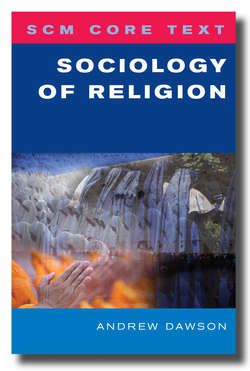Читать книгу SCM Core Text Sociology of Religion - Andrew Dawson - Страница 38
На сайте Литреса книга снята с продажи.
Institutional dimension
ОглавлениеLarge or small, new or established, mainstream or alternative, every religious group or movement embodies some form of institutional dynamic. Indeed, it is something of a sociological truism that no form of associational activity endures through time and space without assuming some degree of organizational formality. As Moburg notes:
Every religious organization has some degree of formalism or institutionalization. This is true even of groups that claim to be ‘merely a fellowship, not a denomination’, and of those so informally and loosely organized that they claim to lack organization altogether . . . This means that, like other institutions, it is subject to the play of social forces in both its formation and its operation. (1984, p. 6)
As an object of sociological scrutiny, the institutional dimension of religion has two important components: the organizational and the ideational.
The organizational dimension of religious institutions pertains to their concrete structures and formalized processes. From goal-setting through finance management to conflict resolution and identity maintenance, formalized organizational processes determine priorities, channel resources and entrench authority. For example, when engaging the organizational dimension of religious institutions, sociologists may focus upon variations in structural dynamics or the different ways in which particular groups and movements mobilize available resources. In the first instance, the different organizational structures in force can be examined to the end of determining the manner in which they facilitate or inhibit institutional adaptability in an increasingly fluid social landscape. For example, whereas established religious institutions enjoy a number of advantages which new religious movements do not, when it comes to institutional adaptability, traditional religions struggle in changing societal environments. This is the case because established organizations find it much harder to evolve and adopt novel structures as quickly and easily as newer groups who do not suffer under the inertial weight of inherited structures which are, by their nature, more resistant to rapid modification. In the second instance, different organizational structures can be compared relative to their efficiency in mobilizing available resources, as might be achieved through the motivation of existing members to make personal sacrifices (e.g. time, money, material things) for the greater good of the institution to which they belong.
At the same time, the institutional processes of religious groups and movements set priorities, allocate resources and confer different kinds of status relative to particular religious construals of the world. These construals constitute the ideational dimension of religion, which comprises an assortment of beliefs, theories and values. In combination, such beliefs, theories and values furnish a religious worldview, which, for example, treats issues such as the nature and activity of the sacred, the origins and purpose of the cosmos and the destiny and responsibilities of humankind. In effect, the ideational dimension constitutes what Kuhn describes as a ‘paradigm’; that is, an interconnecting set of presuppositions and values which entail a particular way of viewing and engaging the world (1962, pp. 43–51).
As a paradigm, the ideational dimension impresses itself upon institutional dynamics by influencing matters such as goal-setting, resource mobilization, structural administration and organizational behaviour. The ideational dimension, then, does not simply provide a symbolic description of the world, it actively orchestrates institutional practice within and towards the world. In Clifford Geertz’s terminology, the ideational dimension is both a ‘model of’ the world and a ‘model for’ the world’s engagement (1973, p. 93). Strained relations between the Roman Catholic Church and various national governments and international charities, for example, stem from Catholic institutional policies in respect of artificial contraception, same-sex adoption and sexual discrimination; policies directly informed by theological judgements in respect of sexual activity, expression and status. In effect, the ideational dimension of religious institutions may at times lead them to act in ways which are not, at least for those looking on, in the material best interests of the organization in question.
In tandem with established organizational dynamics, the ideational dimension influences the associational sphere through its practical and symbolic orchestration of interpersonal activities. As indicated above, this orchestration may be reflected through particular uses of sacred space, liturgical contents and ritual divisions of labour. In its turn, the associational dimension informs individual religiosity through, for example, its reinforcement of subjective representations of the sacred, personal moral judgements and private spiritual practices. Allowing for its idiosyncratic nature and irreducibly personal character, individual belief nevertheless involves the subjective appropriation of otherwise collective symbols, shared values and associational practices.
